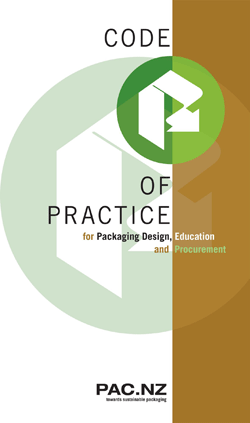The Packaging Council of New Zealand (PAC.NZ) has released version two of its popular Code of Practice.
“The success of the first version of the Code of Practice for packaging design, education and procurement was the practical layout which took the reader through the conflicts of environmental demands for packaging versus the demands for food safety, product protection and an efficient/effective supply chain,” says PAC.NZ president Richard Manaton.
“The Code is written in a way to ensure it isn’t too technical to understand by non-experts, but detailed enough for packaging decision makers. The updated version builds on those attributes, but now includes performance indicators from the Consumer Goods Forum’s new Global Packaging Protocol, the draft ISO standards for packaging and the environment and a selection of appropriate indicators from the Global Reporting Initiative. By including global best practice, we have a Code of Practice which meets the needs of the New Zealand market, but is internationally aligned.
"In New Zealand we are confronting new challenges as the Waste Minimisation Act 2008 begins to bite with local councils implementing their local waste minimisation plans and engaging with local businesses. The Commerce Commission is also taking a harder line on misleading environmental claims and the Government is working on tightening up the Fair Trading Act to require all claims to be substantiated. The purpose of our Code of Practice is to take the user by the hand and lead them through the minefield.”
The Code of Practice is underpinned by the fundamental principle that good packaging design prevents more waste than it creates. It assists stakeholders in the design, manufacture and endof- life management of packaging to minimise its environmental impacts. The approach of the Code is to manage the sometimes conflicting demands of the market criteria for performance and cost, consumer protection and the environment while recognising the need for a sustainable society.
“Much has changed both globally and locally since we first launched our Code of Practice two years ago. We have seen the packaging waste debate shift from simply focussing on packaging recycling rates to understanding the opportunities across the whole-of-life of packaging to eliminate waste in the first place. The issue of product wastage, particularly food waste, dominates global concerns related to the resource losses this wastage represents. The use of packaging, and in particular the technological advances in packaging materials, plays a crucial role in mitigating these losses,” says The Packaging Council’s executive director Paul Curtis.





























































































